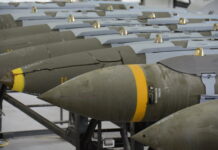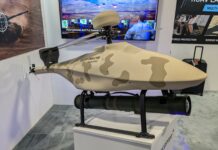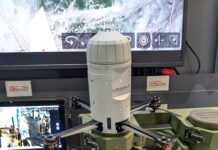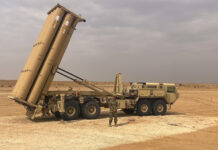This past June French courts overturned an executive order by France’s president that barred any Israeli company – or its representatives – from entering Eurosatory 2024. The ban’s timing was a surprise to the circa 70 Israeli exhibitors and hit many smaller companies very hard. Regardless of country, often an SME’s entire marketing budget for the year is devoted to such eminent events as Eurosatory.
Backlot story
As one of our editors told me in a moment of discourse, “We don’t do politics; we do defence journalism.” Indeed, Mittler has, as a matter of reputation, focused on defence advancements, doctrine, innovation, proving, significance, and technology – but most of all, Mittler is consistently objective and apolitical.
Keeping this front of mind, Mittler Report presents herewith a post-expo report about the would-be product launches and presentations from Israel’s smaller innovators, who develop unique solutions for NATO Europe’s warfighters.
As a de facto ‘interviewer in residence’, I posed the same three questions to senior spokespeople from around a dozen smaller, inventive Israeli companies excluded from Eurosatory. The following interviews are a result of this effort.
All images are courtesy of the respective participating companies, unless otherwise noted. Copyright obligations are born solely by the companies that provided third-party images.
AERONAUTICS – Dan Slasky, CEO

What was the most important innovation for the expo?
One of our systems to be presented is the Orbiter 4 unmanned aerial vehicle (UAV) with its vertical take-off and landing (VTOL) capabilities. The Orbiter 4 VTOL UAV exemplifies a synthesis of, agility, adaptability, implementation of a wide range of intelligence capabilities, and enhanced endurance, setting a new standard in the tactical UAV landscape. This advanced technology redefines unmanned systems in these high stakes environments, offering a distinct combination of manoeuvrability and flexibility for mission success.
The Orbiter 4 VTOL UAV stands out with its ability to take off and land in confined areas and rugged terrain. Its vertical take-off and landing capabilities ensure accurate operations in unpredictable conditions, eliminating the need for runways or infrastructure
How is it unique/different from similar solutions?

The Orbiter 4 VTOL UAV allows the manoeuvring force to operate even in an area with many obstacles, such as rocks, trees, and more, thus completing the mission and enabling high levels of availability. It allows forces to choose the best launch method depending on the mission profile. For missions demanding flexibility the VTOL mode offers precise take-off and landing. For extended surveillance and reconnaissance, operators can opt for the traditional launcher and parachute/airbag system, benefitting from an impressive 24-hour endurance. This versatility makes the Orbiter 4 VTOL UAV ideal for a range of missions, including intelligence, surveillance, target acquisition and reconnaissance (ISTAR), search and rescue (SAR), and logistics support. The ability to switch between VTOL and traditional launcher configurations, at the field level, ensures that forces are well equipped to handle various mission demands.
Why is this important for NATO?
The Orbiter 4 VTOL UAV responds to the operational requirements of NATO countries. For ground forces – as seen in the war in Ukraine – the need for rapid launch and recovery, including in urban scenarios, is a significant mission requirement.
Additionally, there is at times a lack of air and electronic warfare (EW) superiority in the specific battlefield area, hence the need for a robust UAV systems that can operate in these environments.
For naval forces, the VTOL kit, requiring no launcher or parachute, needs minimal space for take-offs and landings, enabling seamless deployment on maritime vessels.
The system offers unique performances and capabilities that meet the requirements of advanced customers, including NATO countries, such as safety and high-performance aspects.
ASIO TECHNOLOGIES – David Harel, CEO

What was the most important innovation for the expo?
Asio Technologies, a renowned developer and manufacturer of tactical defence solutions and geospatial positioning systems, was to present its tactical solutions for the dismounted soldier for mission planning and execution, including the newest version of the Lynx, which has a new configuration and upgraded capabilities.
Lynx is a tactical day/night augmentation system for fighting commanders that features powerful machine vision algorithms to enhance tactical operation and situation awareness and reduce cognitive load. Fully versatile, it enables field of view (FOV) and infrared (IR) detector swap and versatile laser rangefinder (LRF) configuration. Lynx can securely communicate and interface with Asio Technologies’ combat-proven Orion rugged mobile terminal.

Lynx features Asio Technologies’ new Geo Fusion Core. Offering highly accurate real-time image-to-map transformation, it enables augmentation and targeting, coupled with enhanced artificial intelligence (AI) capabilities. Altogether, it improves users’ situational awareness and mission robustness. The updated hardware has an advanced sensor core with a cutting-edge 12u long-wave infrared (LWIR) pixel sensor, a narrow-beam LRF, a rechargeable internal battery, and advanced orientation and positioning sensors. The latest Lynx architecture is 30% smaller and 20% lighter than its predecessor, making it the most advanced and compact tactical hand-held augmentation system developed explicitly for junior command and field combatants.
How is it unique/different from similar solutions?
With its upgraded capabilities and compact design, the new Lynx, coupled with Asio’s combat-proven Orion rugged mobile terminal, forms a seamlessly integrated tactical combat suite, giving defence forces a significant advantage in the field. Asio Technologies continues to lead the way in equipping defence and security forces with the tools they need to succeed in any mission.
Why is this important for NATO?
Massively deployed by key defense customers, Orion enables off-grid and on-grid mission planning, real-time navigation, and enhanced situational awareness using the geographic information system (GIS) database and augmented-reality (AR) capabilities. It serves the individual soldier or commander up to the battalion level, allowing them to get real-time updates from each other regarding friendly and hostile forces, as well as additional mission-critical information.
Orion can securely communicate and interface with other Asio Technologies tactical solutions, such as the Lynx Tactical hand-held multi-function situation awareness system, to provide a fully integrated tactical combat suit for ground forces.
AXON VISION – Brigadier General (Res) Roy Riftin, CEO
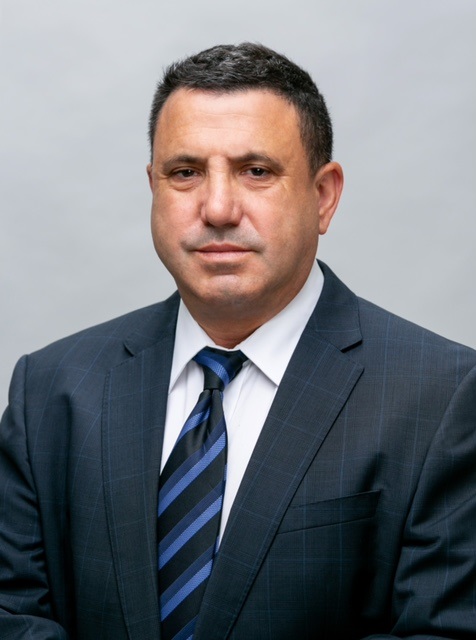
What was the most important innovation for the expo?
Axon Vision, a leading developer of vision-based artificial intelligence (AI) solutions for land, air, and sea platforms, was unveiling its latest innovation: the EdgeUAV. This groundbreaking AI product is specifically designed for UAVs, extending Axon Vision’s combat-proven expertise into the aerial domain.
Leveraging the company’s advanced AI technologies and experience, the EdgeUAV offers superior capabilities for low- to medium-altitude covert operations. Key features include real-time AI-based video processing integrated into a military-grade embedded CPU, providing unmatched processing power. The EdgeUAV can simultaneously detect and track multiple targets across all spectrums and conditions, ensuring comprehensive ISR and situational awareness. Its enhanced operational efficiency makes it ideal for a range of defence and security missions, including intelligence, surveillance, and reconnaissance (ISR), inspection, SAR and covert reconnaissance missions.
In addition to the EdgeUAV, Axon Vision is introducing the EdgeCS (Clear-Sky): an advanced add-on to the company’s combat-proven EdgeSA system. The EdgeSA is an AI-powered 360° situational awareness system for armoured vehicles. It enables continuous operation under closed hatches while providing complete situational awareness from the nearest circuit (LOS) in a single view and maximises lethality and survivability.
The new EdgeCS is part of a counter-unmanned aerial vehicle system (C-UAS) that focuses on aerial threat detection, utilising situational awareness cameras mounted at slanted angles for effective UAV recognition and engagement. Enhancing the security, surveillance, and operational efficiency of crews inside combat armoured vehicles, the integration of EdgeSA with the Edge Clear Sky system is an indispensable tool for modern defence operations.
How is it unique/different from similar solutions?
At Axon Vision we are committed to advancing the semi-autonomous capabilities of our defence and security forces through cutting-edge AI solutions. The introduction of the EdgeUAV and the EdgeCS represent a significant leap forward in providing comprehensive situational awareness and operational efficiency in both aerial and ground operations. It is an important addition to our family of combat-proven AI solutions that further enhance defence forces’ autonomy, situational awareness, lethality, and survivability.

Why is this important for NATO?
Axon Vision designs, develops, and creates AI systems that enable autonomy, situational awareness, lethality and survivability for land, air, and sea vehicles and platforms, setting the standard for future semi-autonomous military operations. Widely trusted by the Israel Defense Forces (IDF) and by leading defence OEMs around the world, Axon Vision’s AI solutions can support NATO’s strategic objectives of maintaining technological superiority, enhancing force protection and improving mission success rates in various operational theatres.
Axon Vision’s solutions can enhance NATO forces’ operational efficiency and effectiveness.
We offer comprehensive situational awareness for various platforms, ensuring continuous operation and maximising lethality and survivability in combat. By focusing on countering emerging threats such as UAVs, Axon Vision’s AI systems help protect assets and personnel. The integration of advanced AI technologies increases the autonomy and survivability of the force, reducing risk to human operators and enhancing mission effectiveness. Moreover, Axon Vision’s solutions are designed to be compatible with existing systems, allowing seamless upgrades and enhancements to operational capabilities, all while offering the reliability of combat-proven technology.
CAMERO TECH – Amir Beeri, CEO and founder

What was the most important innovation for the expo?
The Xaver 1000 is a new and revolutionary AI-based ‘see-through-the-wall’ ultra-wideband (UWB) radar. Having this enhanced level of detail, it can show people’s exact positions and distinguish between adults, children or animals based on their height and shape.
How is it unique/different from similar solutions?
The device can be attached to the wall or operated in stand-off mode, with coverage of up to 42 m. Additionally, the system can be controlled remotely via a wireless unit, minimising the operator’s exposure to potential hazards or dangerous situations.
With its battery-powered operation and foldable design, the Xaver 1000 is easily carried and operated by one person. Users will find the images and interface intuitive and easy to use.
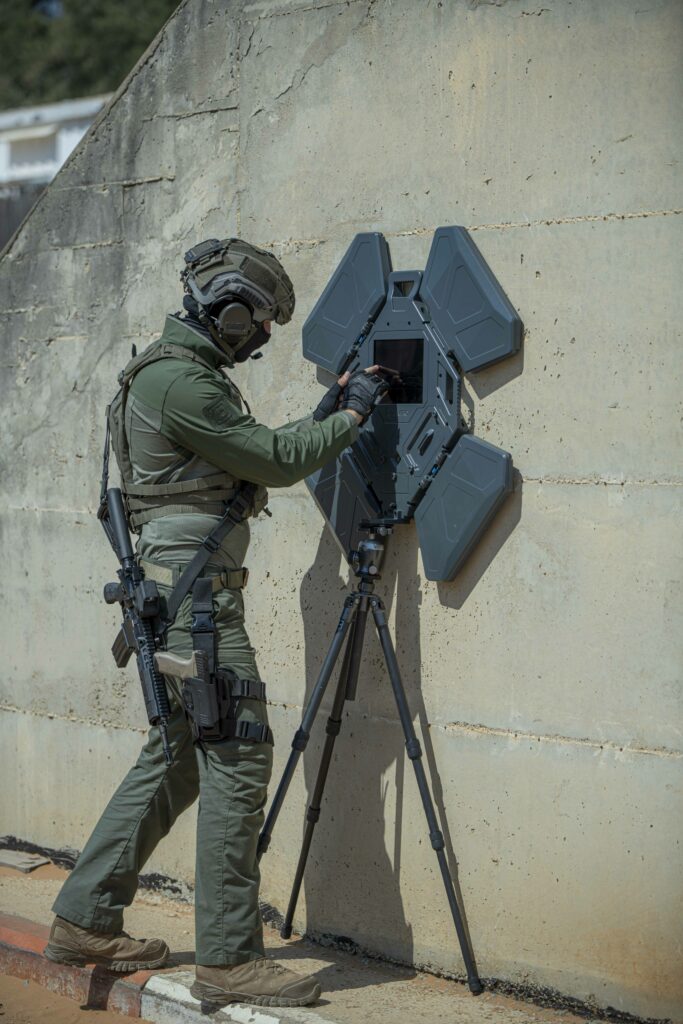
Why is this important for NATO?
This technology enables NATO forces to view hidden areas and obtain 3D images in real time. Improved situational awareness can assist teams in navigating dangerous environments, locating hidden threats and individuals, and making better life-saving decisions.
CREOMAGIC – Alex Shapochnik, Co-Founder and CEO
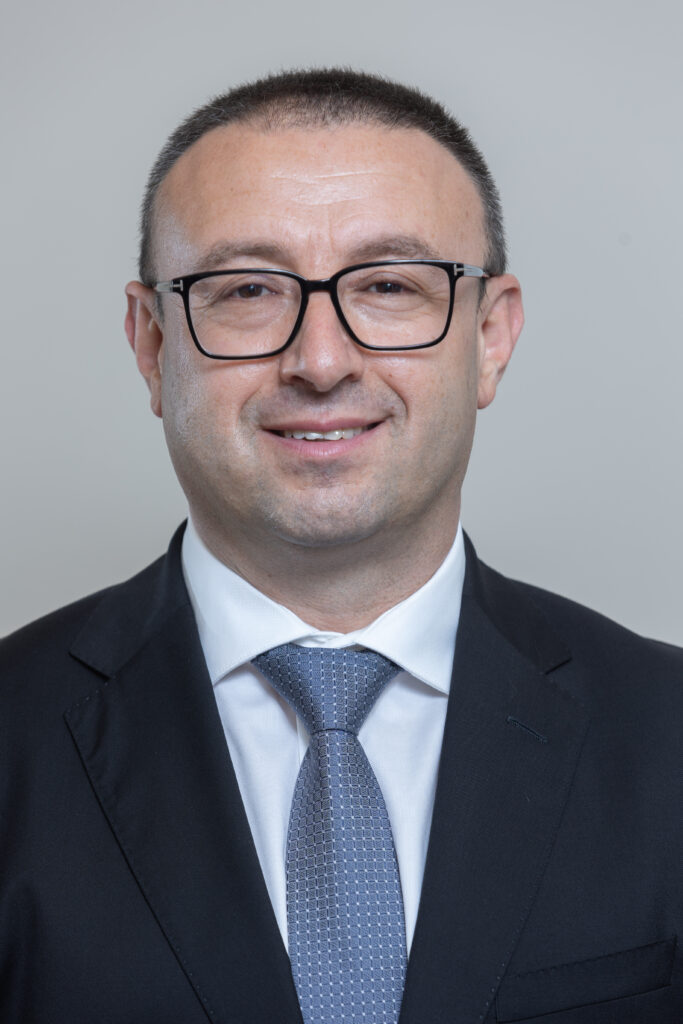
What was the most important innovation for the expo?
Creomagic’s new CreoNet EW capabilities were to be the latest innovative solution to be introduced at Eurosatory. This technology brings a revolutionary approach to secure and reliable communication in contested and electronically challenged environments through its cognitive software-defined radios (CSDR) and dual-waveform capabilities.
Creomagic constantly develops cutting-edge communication solutions and this latest advancement marks a significant leap forward in secure and reliable battlefield communication. CreoNet EW capabilities integrate autonomous CSDRs with dual-waveform technology, allowing for seamless, uninterrupted communication even in the most challenging EW and contested-spectrum environments. This innovation is designed to autonomously detect and mitigate potential threats and interference, ensuring mission-critical teams can rely on secure, resilient connectivity without the need for constant operator intervention. This groundbreaking technology is a game-changer for modern tactical operations, addressing the ever-growing need for reliable, high-speed data transfer in increasingly complex and hostile environments.
How is it unique/different from similar solutions?
CreoNet stands out due to its machine-learning capabilities, which enable autonomous cognitive functions. These functions allow it to continuously analyse the electromagnetic spectrum in real time, detect potential threats, and automatically adjust its parameters to maintain optimal communication. Unlike other solutions, it operates autonomously and continuously without any intervention from operators or previous configurations. This ensures uninterrupted, secure data transmission even during EW blackouts.
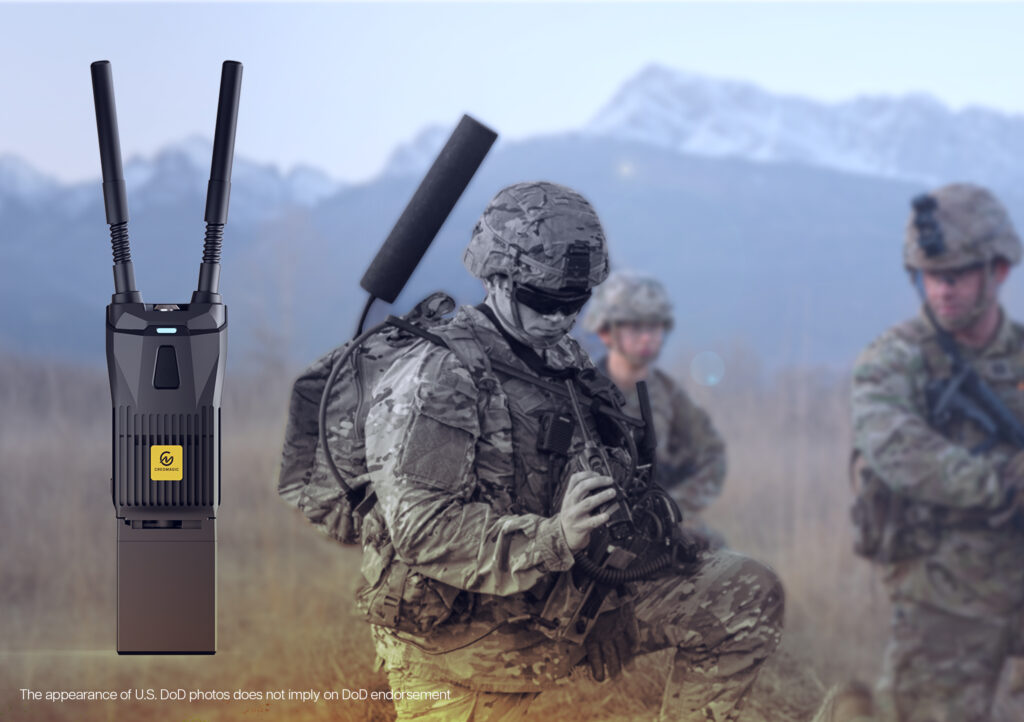
Why is this important for NATO?
This technology is crucial for NATO as it ensures that mission-critical communications remain secure and reliable in the face of modern electronic warfare threats. Modern conflicts often involve sophisticated EW tactics aimed at disrupting or intercepting communications. The ability to autonomously manage and mitigate interference without operator intervention significantly enhances operational effectiveness and provides NATO forces with a tactical edge in increasingly complex and contested environments. This EW communication technology helps NATO counter these threats by ensuring that their communication networks remain secure and operational even in the face of deliberate interference and jamming attempts by adversaries.
D-FEND SOLUTIONS – Jeffrey Starr, CMO

What was the most important innovation for the expo?
D-Fend Solutions’ latest product, the next-generation EnforceAir2, features the best offerings of the original award-winning EnforceAir RF-cyber take-over counter-drone technology with enhanced, expanded and extended C-UAS capabilities. The system now comes with even more power, performance, portability and range, all in a more compact and accessible system.
How is it unique/different from similar solutions?
EnforceAir2 uses high-performance, purpose-built C-UAS cyber-SDR hardware with specially designed PCBs. The system features:
- longer-range detection and mitigation coverage ranges;
- the ability to overcome the limitations of traditional commercial off-the-shelf SDR platforms;
- multiple receivers and transmitters, powerful real-time processing, advanced RF technology and compliance with radio regulations;
- high-performance multiple input, multiple output antennas for improved radiation patterns and a compact footprint form-factor implementation suitable for tactical or fixed applications

EnforceAir2’s brand-new manportable backpack option provides flexible on-the-move full capability protection for tactical and stealth operations in a compact ultra-mobile solution. The system features covert use case suitability with concealed antennas and a rugged, slim, lightweight design, as well as
long-term power from hot-swap batteries providing long-duration, no- downtime continuous operations.
The seamless operational flexibility of EnforceAir2’s multi-use deployment kit enables tactical teams to overcome deployment challenges and achieve total operational flexibility. This includes:
- quick set-up, locking, and release mechanisms for rapid conversions between deployments;
- Short- to medium-term stationary deployment options for tactical teams;
- tactical, vehicular, stationary, and manportable (backpack) deployments;
- best-in-class size, weight and power (SWaP) characteristics, delivering unprecedented power and portability in a compact, lightweight form factor with easy transport and simple handling and set-up.
Why is this important for NATO?
EnforceAir2 reinforces D-Fend’s strategic market position as the pioneer and leader in the ground-breaking technology category of RF-cyber for counter-drone detection and mitigation, focused on control, safety, and continuity. As the threat to NATO from hostile drones escalates and proliferates into more varied environments and scenarios, EnforceAir2 now brings unprecedented power, flexibility, and portability to military forces to confront and overcome the growing risks and challenging dangers.
ELSIGHT – Roee Kashi, Co-founder & CTO

What was the most important innovation for the expo?
There doesn’t seem to be a need to explain why the use of UAVs is important these days for NATO’s operations. What people may not realise are the potential applications when using beyond-visual-line-of-site connectivity both in UAVs and in other systems – such as cameras that require high bandwidth, uninterrupted video and command-and-control transmission.
The nature of a military force has been changing and today, when bigger isn’t necessarily better, Elsight’s handheld Halo platform adds robust uninterrupted connectivity for continuous communications for the operations of UAVs and other platforms.
With a small SWaP footprint, the Halo is portable and is set up in minutes. It’s perfect to add continuous communications to mobile field forces over difficult terrain. And the case for multi-link bonded cellular communications has been proven already on the battlefield – holding up better than the traditional RF communications, which are often jammed.
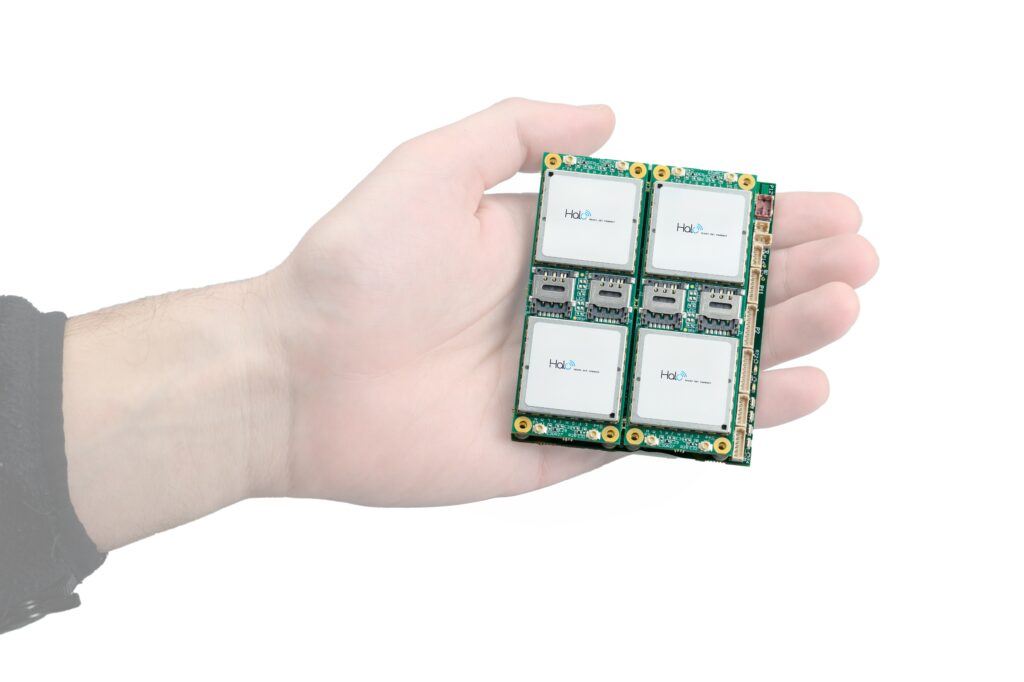
How is it unique/different from similar solutions?
Halo’s multilink link bonded solution is not a failover solution, nor is it dependent on one primary link and one secondary link. There is practically no latency and it uses very little power. It also is very small and weighs only 93 g, maximising its portability.
Why is this important for NATO?
Wide and comprehensive situational awareness, precise data collection in monitoring and surveying sites, and uninterrupted communications is essential for any NATO mission.
IMCO GROUP – Ariel Kandel, CEO

What was the most important innovation for the expo?
IMCO Group has for five decades been at the forefront of enhancing the capabilities of armoured military vehicles. Our extensive experience has led us to become a leading systems house of applications related to data collection from various sensors, coupled with advanced processing and analysis capabilities in order to deliver precise and actionable data to the different users. This sets us apart in the field.
A prime example of our expertise is our state-of-the-art situational awareness system. This integrates exterior cameras with AI-powered processing to provide real-time environmental data directly to crew stations. It showcases our ability to collect data from multiple sensors, process it efficiently using advanced AI technologies and present it to users in an intuitive, actionable format. This capability significantly enhances the crew’s decision-making process in complex battlefield scenarios.
Another example is our next-generation vehicle system monitoring suite, which further demonstrates our data handling capabilities. This suite leverages advanced data collection and processing techniques to monitor vehicle health in real time from various sensors. Such precise monitoring capabilities maximise operational readiness.
How is it unique/different from similar solutions?
What sets us apart is our modular infrastructure, enabling rapid integration of new technologies. If a new AI-based processing engine is developed, we can implement it in any tank or armoured personnel carrier without major architectural changes. This allows for cost-effective capability updates with minimal impact on operational readiness.
Our relationship with customers is another key differentiator. With solutions implemented in some of the most active armed forces globally, we can swiftly modify our systems to address battlefield challenges, drawing on 50 years of experience.
As a reliable subcontractor to world leading defence integrators, we provide solutions for all types of armoured vehicles, collaborating with any manufacturer or integrator to tailor technologies to their specific needs. This business model ensures high flexibility and adaptability across various platforms and partners.

Why is this important for NATO?
NATO has been supporting Ukraine for over two years in Kyiv’s fight against the Russian invasion. Since the beginning of the conflict, the importance of armored vehicles, especially tanks and Armored Personnel Carriers (APCs), has become evident to every NATO member state.
The battlefield in Ukraine has brought armored vehicles back to the forefront, with these platforms serving as critical components in determining the outcomes of engagements. For tanks and APCs to fulfill their operational duties, they must adhere to three main principles: survivability, mobility, and precision. Our systems support and enable these capabilities in armored vehicles. This is our area of expertise. We know how to make information from the vehicle’s external environment accessible to the crew and enhance it with data about the platform’s operational status. By providing these critical capabilities, our solutions directly address the needs highlighted by the ongoing conflict, making them particularly relevant and important to NATO.
We enhance the effectiveness of armored vehicles in modern warfare scenarios, which is crucial for NATO’s defense strategies and operational readiness. Our ability to rapidly integrate new technologies and adapt to specific operational requirements also aligns with NATO’s need for flexible, cutting-edge solutions that can keep pace with evolving threats and battlefield conditions.
IWI – ISRAEL WEAPON INDUSTRIES – Ronen Hamudot, Executive VP, Marketing & Sales

What was the most important innovation for the expo?
The ground-breaking Arbel is the world’s first ever computerised small arms system, revolutionising combat lethality and survivability and redefining combat effectiveness on the modern battlefield.
The system features an electronic trigger with a new firing mode, enhancing accuracy in high-pressure situations where seconds count.

How is it unique/different from similar solutions?
The Arbel system increases the lethality, accuracy and survivability of the operator by up to three times.
The system includes three main components: a computer-based platform, an upgraded electronic trigger mechanism with sensors and featuring a new Arbel firing mode, and a removeable battery. The Arbel system does not influence the operation of the gun and the operator can still use the gun as a standard weapon, even if the battery runs out.
IWI’s Negev light machine gun (LMG), recognised as the world’s most accurate machine gun, is the first small arm to adopt the Arbel system, harnessing its unmatched precision and controlled firing capabilities. The electronic trigger, featuring the new Arbel firing mode along with a built-in fire control system, enhances accuracy, especially in time-sensitive situations. With the Arbel system significantly enhancing hit probability and increasing lethality by up to three times, the Negev LMG with the Arbel system integrated achieves an 80-90% hit rate on moving targets.
Why is this important for NATO?
While enhancing the lethality, accuracy, and survivability of the operator, the Arbel system takes into consideration the battlefield exertions of the user, compensating for the operator’s declining physical and mental abilities due to exertion, fatigue, stress and other factors, thus increasing survivability.
The Arbel also saves ammunition, which is, of course, a major factor during combat situations and training.
MKS | Ophir – Dr Kobi Lasri, Ophir IR Optics General Manager

What was the most important innovation for the expo?
The most significant innovation we planned to unveil at the expo was expansion of the low-SWaP LightIR and FoldIR continuous zoom lens family, designed to revolutionise defence airborne electro-optical (EO) systems.
Specifically engineered for aerial electro-optical gimbals across all sizes, these lenses for LWIR, MWIR, and SWIR wavelengths excel in high optical performance, line-of-sight (LOS) retention, and impressive DRI capabilities within an exceptionally compact form factor.
The introduction of the FoldIR 25-275 mm f/5.5 lens, fitted for five-inch gimbals and the smallest and highest performance lens on the market today, exemplifies our commitment to advancing airborne defence EO systems, offering extended vision ranges and robust performance in the most compact form factor.
Additionally, Ophir’s long-range IR continuous zoom lenses for premier C-UAS IR-based platforms, including LWIR, MWIR, and SWIR lenses, provide outstanding DRIs, crisp imagery over the full zoom range and accurate line-of-sight retention, which is critical for early and accurate identification, reducing false positive alerts and maintaining continuous tracking of fast-moving targets.

How is it unique or different from similar solutions?
The low-SWaP zoom lens stands out due to its revolutionary opto-mechanical design, which significantly reduces the length, size, and weight of the optical system while maintaining unrivaled performance. These lenses optimise the EO payload gimbal system, enabling the creation of ultra-compact EO systems with unparalleled image quality.
The lenses’ folded-optics design allows for the incorporation of a large-aperture lens with a long effective focal length (EFL) and extended vision ranges (DRI), while minimising the total size of the payload gimbal. This results in longer operational duration and the highest imaging clarity.
Additionally, Ophir’s long-range IR continuous zoom lenses for C-UAS platforms offer unrivalled exceptional detection and identification capabilities. With the ability to avoid image blurring on quick, fast-moving targets, their advanced design ensures early and accurate identification, reducing false positive alerts and maintaining continuous tracking of the target without losing sight.
Why is this important for NATO?
Ophir’s wide range of solutions for LWIR, MWIR, and SWIR low-SWaP continuous zoom lenses are crucial for NATO because they enhance the operational capabilities of tactical UAVs through advanced thermal imaging. Their low-SWaP characteristics enable extended mission durations and greater operational flexibility, meeting NATO’s evolving defence needs. With long detection ranges, Ophir lenses empower NATO forces with superior situational awareness and enhanced threat detection capabilities across various operational environments.
NATO currently faces significant challenges and threats from UAVs, which are increasingly used for hostile actions as well as ISR duties. Ophir IR Optics’ comprehensive product line, including LWIR, MWIR, and SWIR long-range continuous-zoom lenses, reinforces NATO’s capability to effectively counter these unmanned aerial threats.
By leveraging these cutting-edge solutions, NATO can achieve heightened operational efficiency, improved mission success rates and strengthened security across its defence operations. This innovation underscores our dedication to delivering high-performance imaging solutions that align with the rigorous demands of modern defence and security operations.
NETLINE – Shai Palti, CEO

What was the most important innovation for the expo?
Addressing the rapid changes in UAV threats, Netline has developed a novel non-database approach to drone detection. Our detection layer now combines a hybrid algorithm designed to detect all drone threats – including various non-standard and DIY FPV drones, which are the most elusive threat in recent warzones and conflict areas.
This new approach allows Netline to provide the most relevant counter-UAV measurements and can be implemented in various configurations, including manpacks, vehicles, and rapid deployment systems. (Photo-19: Netline handheld UAV detector. (Image: Netline)
How is it unique/different from similar solutions?
Netline is stepping out of the traditional approach of counter-UAV systems and providing protection from DIY FPV, non-standard small unmanned aerial systems (sUASs) as well as commercial drones. The new version of Netline’s detection sensor is based on wideband and non-database detection capabilities, presenting a new hybrid approach.
This hybrid algorithm combines spectral signature analysis with Netline’s unique technology to specify a UAV’s common characteristics. Working together, these two methods provide a broader image of the airspace, ensuring a complete detection phase in the C-UAS mission.

Why is this important for NATO?
The proliferation of DIY FPVs drones and sUASs is challenging for NATO’s traditional defence systems. These relatively inexpensive and easily assembled devices are being weaponised by adversaries to conduct surveillance, deliver explosives, and disrupt military operations in conflict areas.
Netline’s new approach offers our NATO clients a comprehensive solution for detecting, locating, and neutralising every threat in the spectral area, even if it’s a new, DIY, or non-standard UAV with unknown spectral signatures or communication links.
PLASAN – Nati Atias, Senior Director, Business Development

What was the most important innovation for the expo?
Plasan’s naval protection solutions showcase an advanced modular armour design that addresses a wide range of threats from sea, air, and land, including those from rogue nations, terrorists and pirates. Leveraging decades of combat armour expertise, these solutions offer comprehensive defence against bullets, fragments and rocket-propelled grenades (RPGs) across various ship sizes. The modular design simplifies installation by eliminating the need for extensive 3D scanning and vessel-specific planning, allowing for immediate fitting once the vessel is built. This approach significantly reduces both installation time and costs. The lightweight armour panels protect critical areas and meet stringent environmental standards, including the most demanding fire, smoke and toxicity requirements. Trusted by leading nations and adopted by NATO navies, Plasan’s solutions ensure superior protection and operational readiness for modern naval fleets.
How is it unique/different from similar solutions?
Plasan’s naval armour solutions stand out due to their innovative modular design, which transforms the installation process. Unlike traditional methods requiring extensive 3D scanning for each compartment on every vessel, followed by vessel-specific planning, Plasan’s modular approach enables immediate installation post-construction. This design adapts to variations between vessel types without requiring adjustments, facilitating simultaneous installation across multiple vessels, even during ongoing construction. The system’s commonality reduces both installation time and life cycle costs. This streamlined approach accelerates deployment, simplifies processes and eliminates repetitive tasks, providing a modern, efficient alternative that delivers significant time and cost savings.
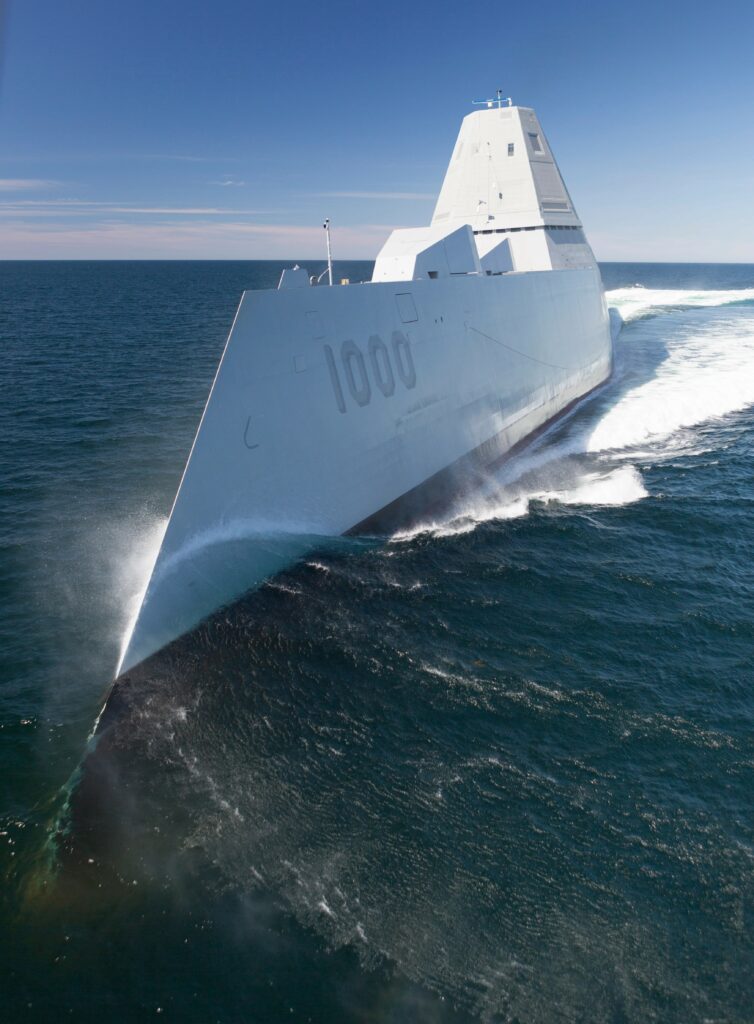
Why is this important for NATO?
Plasan’s modular naval armour solutions are crucial for NATO fleets due to their efficiency, adaptability, and cost-effectiveness. The modular design results in significant lifetime cost savings by reducing the need for custom parts and lowering maintenance expenses. By eliminating the need for detailed 3D scanning and vessel-specific planning, the solution facilitates rapid deployment and allows for simultaneous installation across multiple vessels, essential for maintaining NATO’s strategic readiness. Notably, Plasan armour and its RPG protection components have already been deployed on NATO vessels, meeting all relevant standards, regulations and mission requirements. This adaptability ensures quick adjustment to various vessel configurations without delays or excessive costs, enhancing the overall effectiveness and sustainability of NATO’s naval forces. Plasan’s solutions support NATO’s defence strategy by providing reliable protection while optimising resource use and operational readiness.
SCD – Shai Fishbein, Vice President, Business Development & Marketing

What was the most important innovation for the expo?
SCD’s most important recent innovation is the SWIFT-EI: a groundbreaking SWIR detector that seamlessly integrates event-based imaging capabilities and high frame-rate capabilities (up to 1,500 Hz), revolutionising the defence and industrial sectors alike. Equipped with advanced FPA-level detection capabilities, it is basically two sensors in one, enabling imaging channel and event-based channel simultaneously. The SWIFT-EI offers SWIR imaging that supports day and low-light scenarios, enabling 24/7 situational awareness with superior atmospheric penetration, and offers low-cost SWIR imagery for tactical applications. Furthermore, its event-based imaging channel provides advanced capabilities, such as hostile fire indication, multi-laser spot LST capabilities, and SWIR event-based imaging, broadening the scope of target detection and classification.
How is it unique / different from similar solutions?
The SWIFT-EI is a world-first SWIR two-in-one infrared detector, enabling event-based imaging in parallel with highly sensitive SWIR imaging video.

Why is this important for NATO?
The SWIFT-EI enables the end user to have the most advanced SWaP-C SWIR detector with an embedded event and laser spot tracking (LST) capability in the market. Those capabilities can ensure a competitive edge for NATO partners on the modern battlefield.
MEPROLIGHT – Semion Dukhan, Director of Marketing & Sales

What was the most important innovation for the expo?
The most important innovation for the expo was the launch of the Mepro C6: a versatile smart electronic sight designed for various ammunition types, including lethal rounds such as 5.56 mm, 300BLK, and 7.62 mm, as well as high explosive (HE) low- and medium-velocity grenades. It also supports less lethal munitions like smoke, rubber, and paint rounds. Its standout feature is the ability to maintain multiple zeroing reticles simultaneously, allowing users to quickly switch between different targeting scenarios. This flexibility is enhanced by an integrated or attachable laser rangefinder, which provides instant distance readings and ballistic calculations, enabling precise shooting across varying ranges. The Mepro C6 addresses the modern demands of dynamic combat environments, offering unparalleled adaptability and accuracy.
How is it unique/different from similar solutions?
The Mepro C6 stands out from similar solutions due to its multi-reticle zeroing capability, which allows users to switch between different reticle settings without needing to re-zero the sight. This feature is particularly beneficial for operators using a variety of ammunition types, as it simplifies the transition between them. Additionally, the integrated or attachable laser rangefinder provides real-time distance measurement and ballistic trajectory calculation: a feature not commonly found in other sights. This combination of versatility, precision and adaptability makes the Mepro C6 a ground-breaking tool in the field of smart electronic sights.

Why is this important for NATO?
The Mepro C6 is crucial for NATO because it enhances operational flexibility and efficiency in diverse combat scenarios. Its ability to support both lethal and less-lethal ammunition types, coupled with rapid reticle adjustment and precise ballistic calculations, allows NATO forces to respond more effectively to a wide range of threats. The growing demand and usage of grenade launchers and their associated sights further underscore the importance of the Mepro C6, which meets these needs with its versatile design. By integrating the Mepro C6 into their inventories, NATO armed forces can improve mission success rates, reduce collateral damage and ensure better protection for both military personnel and civilians in complex environments.
SMARTSHOOTER Michal Mor, Smartshooter CEO and founder

What was the most important innovation for the expo?
The latest spotlight from Smartshooter is on the SMASH Hopper Light Remotely Controlled Weapon Station (LRCWS). Designed to be platform-agnostic, the SMASH Hopper can be seamlessly integrated into a wide range of manned and unmanned platforms, offering a versatile solution for diverse operational requirements. As a multi-mission system the SMASH Hopper is capable of operating from land, air, and sea platforms, effectively engaging targets in various environments.
Smartshooter has also unveiled the SMASH Hopper’s extended night capabilities. Equipped with a thermal sensor, the upgraded SMASH Hopper facilitates precise firing at night, offering operators a decisive edge in low-light scenarios against both ground and aerial targets.
How is it unique/different from similar solutions?
The capability to accurately engage ground and aerial targets under low-light conditions offers our forces a decisive advantage on the battlefield, ensuring operational success around the clock.
Why is this important for NATO?
The SMASH family of fire control systems is renowned for its remarkable ability to significantly enhance hit probability against ground and aerial targets, including UAVs. SMASH enables users to independently identify targets or leverage detection system guidance for precision locking. Once locked, SMASH tracks target movements and synchronises shot release for swift and precise hits. Harnessing AI, computer vision and advanced algorithms, the SMASH family of fire control systems ensures precise hits, boosts situational awareness, and minimises collateral damage, empowering forces to operate with intelligence, precision and connectivity.
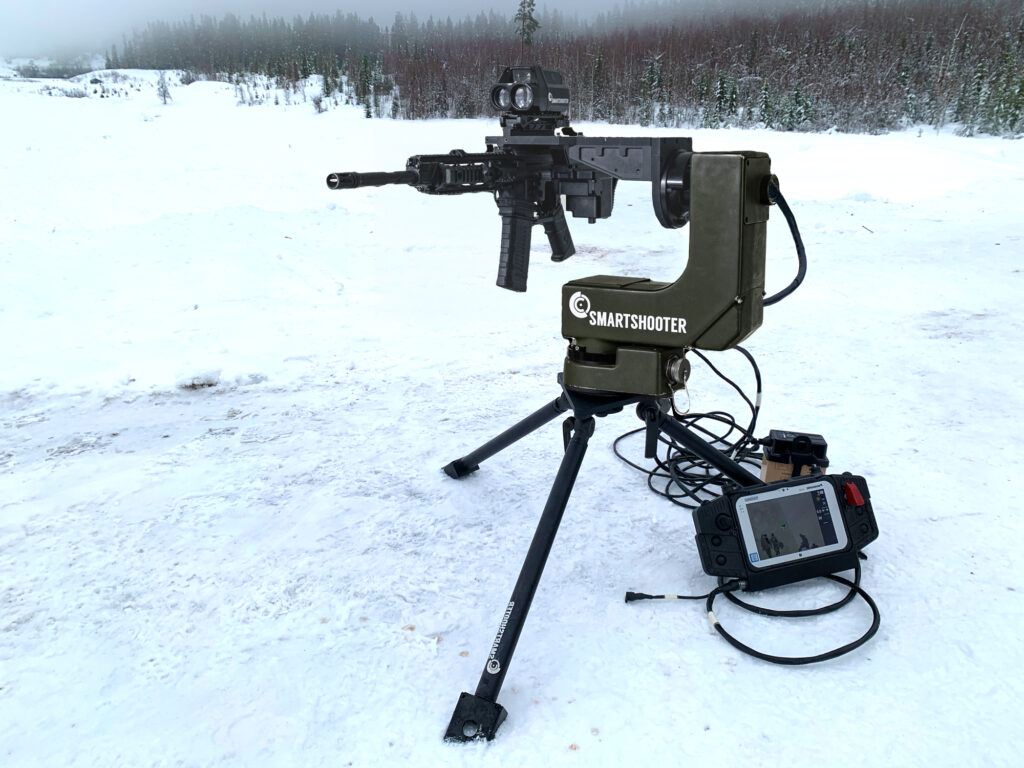
Over 10 NATO countries have already chosen SMASH fire control systems and their effectiveness has been unequivocally demonstrated across diverse environments. Armed forces from the UK, Germany, the Netherlands, and eight other NATO countries utilise SMASH systems to engage ground targets and UAVs with unparalleled precision and efficiency. We take pride in supporting NATO countries’ defence and security efforts by supplying SMASH fire control systems, guaranteeing precise target hits across diverse terrain in the land, air and sea domains.

Special thanks to the participating companies and the media relations experts at Eden Public Relations and Hypetech Marketing.









